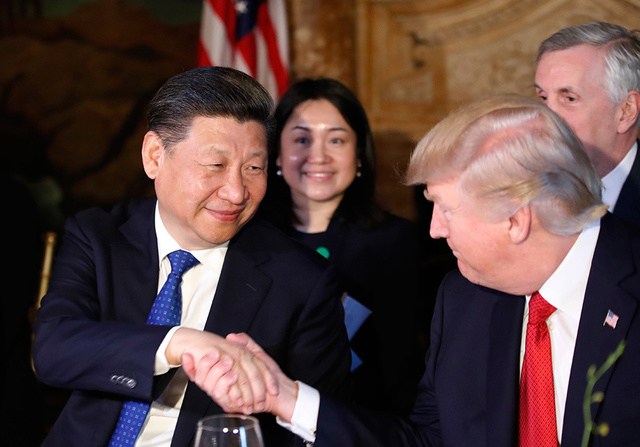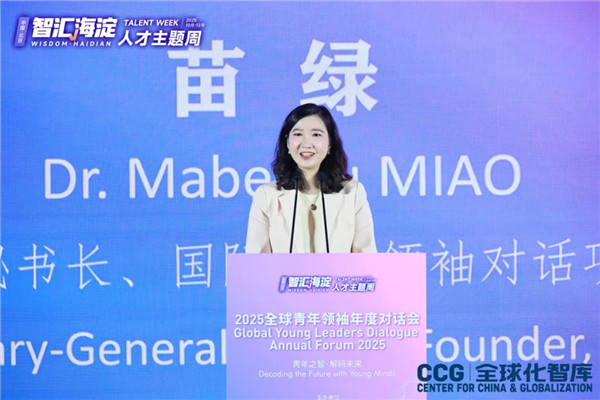He Weiwen: What’s Next After Beef ?
May 18 , 2017
China and the US on May 11 announced simultaneously the 10 initial results of the 100-day action plan of the US-China Comprehensive Economic Dialogue. We can call it an early harvest. The 10 results are dedicatedly balanced, benefiting both the US and China, with six mostly for the US, including beef, biotechnology products and LNG exports to China, market access for EPS, credit rating and bond underwriting. The four for China include cooked poultry exports, extension of current non-action relief to SCH, equal banking regulatory standards and a US official attending the One Belt One Road Forum in Beijing.

Intangible More than Tangible Results
The early harvest, while tangible, has a far more significant intangible implication. It shows to the world that China and the US are anchoring their thorny business relations on a practical, item-by-item, trouble-shooting basis for mutual benefit ruled by law, rather than harsh attacks, trade-war threats based on an arguable logic about currency manipulation, the trade deficit and job losses. It will serve not only as a basic approach for future Comprehensive Economic Dialogue and managing other trade and investment issues, but also as a stabilizer for world trade uncertainties.
The six items for US business have a much larger intangible significance. The potential export increase in beef and other biotechnology products will be far outweighed by its political ramifications. Agricultural production, while accounting for 2% of the total US economy, plays a much larger role in Congress and agriculture-state politics. The author was formerly the economic and commercial counselor at the Chinese consulate general in San Francisco 20 years ago, and personally spent much time and energy in tackling the US Northwest wheat export to China ( banned over the smut disease issue) and Californian citrus export to China ( banned over the Mediterranean fruit-fly issue). The import ban was ultimately lifted on the two items, which generated a heated repercussion in the states of Washington and California, in the Congress and in the Clinton Administration. China and the US achieved WTO agreement only after the lift of the ban. The resumption of beef exports, the endorsement of LNG to China, and fresh market access for US financial MNCs will certainly make the agriculture states, the energy industry and Wall Street happy. All three are important constituency bases for the Trump Administration.
The four early harvest results for Chinese business also have larger intangible significance. They have provided further assurance of national treatment for Chinese investment and banking operations in the US. It also shows that Trump Administration is not quenching Chinese export to the US for cutting its huge trade deficit. The most significant result is the US official participation in One Belt, One Road Initiative proposed by China. It will be a milestone in both China-US cooperation and OBOR development. Even the six results “for the US” have constructive effects in China. The three items in the financial sector, among others, fit China’s own direction in comprehensive deepening reforms and opening up, and thus could serve as an actual catalyst.
Later Harvest on Horizon
China and the US are expected to tackle more difficult issues over the remainder of the 100-Day Action Plan development. While other issues should be identified and advanced, advance of the above 10 initial results is also needed.
First, more high-tech products should be exported to China. The increase of US agricultural products exports to China, though significant politically, does not contribute much to balancing the bilateral trade in goods. Total US agricultural products exports worldwide was only $ 77.48 billion in 2016, 5.3% of its total exports. Out of the $ 77.47 billion, China took $ 19.50 billion, or 25.2%, more than twice the volume taken by Canada, the second-largest importer of US agricultural products. Even if China takes another $ 20 billion, the US goods trade deficit with China could only be cut by 5.3%. It is unlikely that China could take unlimited agricultural products from the US, as China is already the world largest producer of grain and meat. What is more, the early harvest again gives an impression that the US is only strong in offering primary resources (agriculture, energy) when trading with China. The actual advantages of the US export are transportation equipment, computer and electronics, machinery, semi-conductor, environmental goods and new materials. There should be a major breakthrough in US export expansion to China in those areas.
Second, energy infrastructure cooperation should follow the LNG trade. According to the US Department of Energy, the US exported 1783.5 Bcf of natural gas in 2015. Out of the total, LNG accounted for only 28.4 Bcf, and pipeline transmission for 1,754.9 Bcf (to Mexico and Canada). US natural gas could not be shipped to China through a pipeline, but must be liquefied to LNG and be shipped by sea. However, large volume LNG export depends on an infrastructure advance. The two countries could find good cooperation opportunities in this field. The author also engaged in a proposal in Alaska natural gas export to China in 1997 when serving at the Chinese consulate general in San Francisco. During a Chinese trade mission to Alaska buying oil, we had a trip to Prudhoe Bay, the North Slope of Alaska. It was reported then that a huge natural gas reserved had been identified there. BP, Arco (a leading oil engineering company in Alaska) and other oil giants wanted to launch a mega project with total cost of roughly $ 15 billion. The project envisaged a new trans-Alaska gas pipeline, parallel to the existing oil pipeline, to the southern port Valdez, and a new liquefaction facility there. They hoped that China could participate in the investment. In turn, part of the LNG would be shipped to China, with American companies participating in receiving facilities investment in China east coast. We worked hard for that opportunity. However, the proposal was not moving and the federal government banned Alaska oil and gas export later. After 20 years, we should consider the collaboration in US energy infrastructure rebuilding once again, as a part of President Trump’s plan in massive infrastructure investment across America. China’s participation in American natural gas infrastructure investment, with part of the LNG supplied to China, could ensure a long-term, sustainable energy project benefiting both countries.
Third, the steel trade issue needs new solutions. Chinese investment, especially greenfield investment, in the US rust-belt area steel industry should be encouraged. The investment should advance the existing facilities and build up new technologies, create jobs and help find new market along the One Belt, One Road economies. Instead of trade frictions, steel industry of the two countries could find a new horizon for future growth.
Fourth, financial cooperation should develop along One Belt, One Road. The massive infrastructure and industrial investment along the route has shown a financial resources gap of hundreds of billions of. While AIIB, ADB, WB and Chinese government and state-owned bank loans cover a large amount of financial needs, the greater part will be from private capital. The US has by far the world largest capital market and sophisticated PPP experiences. China and US could discuss, during later stages of 100-days plan, practical projects along the One Belt, One Road that offer potential for cooperation. Both countries could find enormous new markets and new opportunities, thus leading to new win-wins.
Topical News See more






